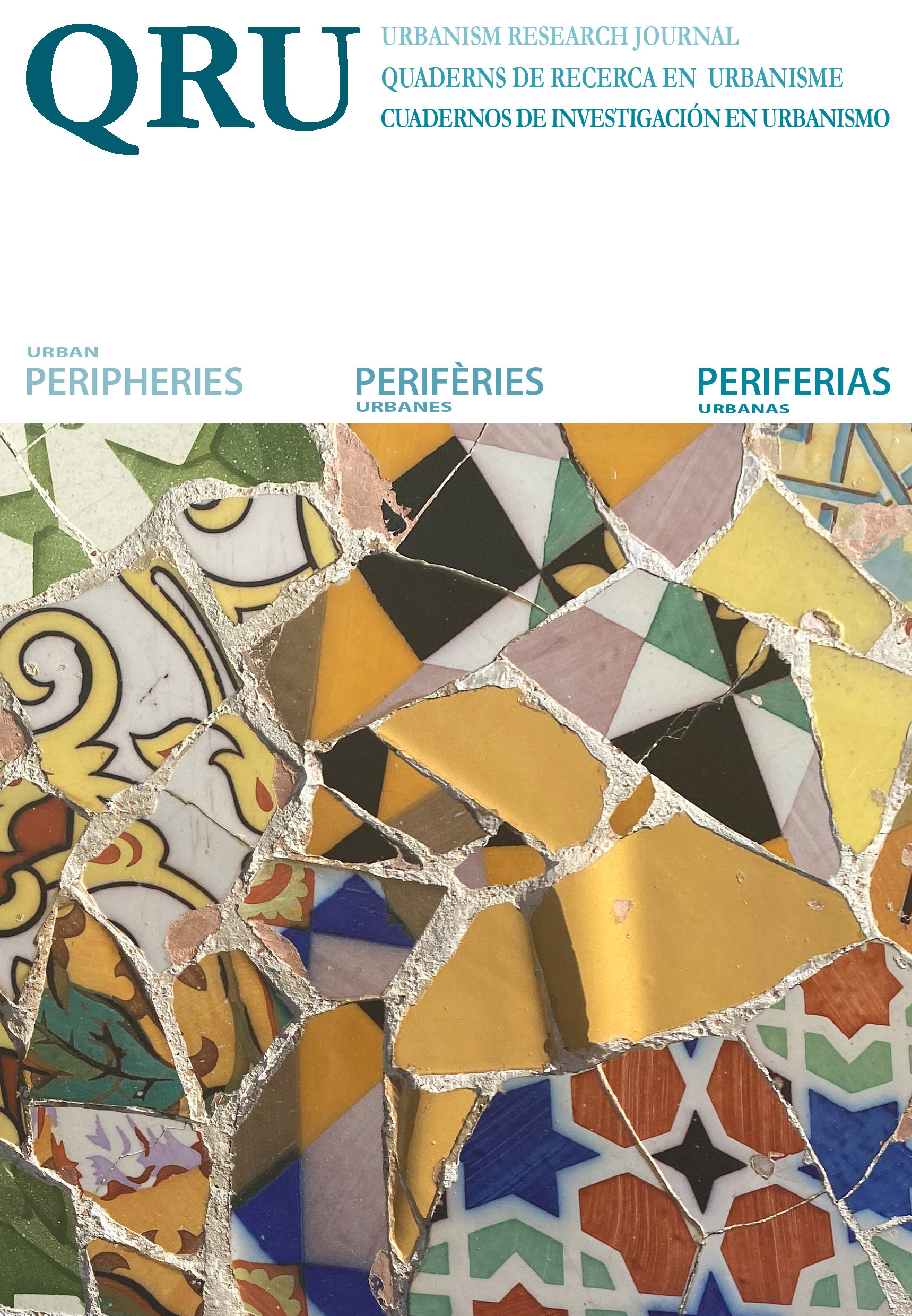Urbanización periférica en Buenos Aires, Estambul, y Barcelona: Una mirada ‘desde el Sur’ a las urbanizaciones españolas
A ‘southern’ look at the Spanish urbanitzacions
DOI:
https://doi.org/10.5821/qru.11916Resumen
Este artículo yuxtapone los procesos de urbanización que tuvieron lugar en el Gran Buenos Aires, el Estambul metropolitano, y la región metropolitana de Barcelona bajo sus respectivos regímenes desarrollistas a través del concepto de ‘urbanización periférica’ de Teresa Caldeira (2017). Este análisis comparativo destaca el papel de la autoconstrucción y la autourbanización como elementos fundamentales para sostener proyectos desarrollistas en todo el mundo al dar acceso a la vivienda a amplios sectores de la población y proporcionando, a su vez, una muy necesaria reserva de mano de obra industrial y un mercado de consumidores propietarios de suelo. Esta comparación señala también el papel clave del Estado (con demasiada frecuencia descartado como ausente) y las formas en que diferentes grupos sociales participan de la urbanización periférica (desde las clases pobres urbanas hasta las élites, pasando por las clases medias). Al centrarse en la urbanización periférica como proceso en lugar de como forma construida, esta comparación añade complejidad a los análisis que han tratado de explicar las prácticas periféricas en Barcelona exclusivamente a través de formas y modelos del Atlántico Norte, recurriendo en su lugar a países del Sur Global que han experimentado dinámicas similares.
Publicado
Número
Sección
Licencia
Aquellos autores/as que tengan publicaciones con esta revista, aceptan los términos siguientes:
Los autores/as conservarán sus derechos de autor y garantizarán a la revista el derecho de primera publicación de su obra, el cuál estará simultáneamente sujeto a la Licencia de reconocimiento de Creative Commons CC BY-NC-ND- 4.0 que permite a terceros compartir la obra siempre que se indique su autor y su primera publicación esta revista, pero no se pueden cambiar ni se pueden utilizar comercialmente.
Los autores/as podrán adoptar otros acuerdos de licencia no exclusiva de distribución de la versión de la obra publicada (p. ej.: depositarla en un archivo telemático institucional o publicarla en un volumen monográfico) siempre que se indique la publicación inicial en esta revista.
Se permite y recomienda a los autores/as difundir su obra a través de Internet (p. ej.: en archivos telemáticos institucionales o en su página web) antes y durante el proceso de envío, lo cual puede producir intercambios interesantes y aumentar las citas de la obra publicada. (Véase El efecto del acceso abierto).













